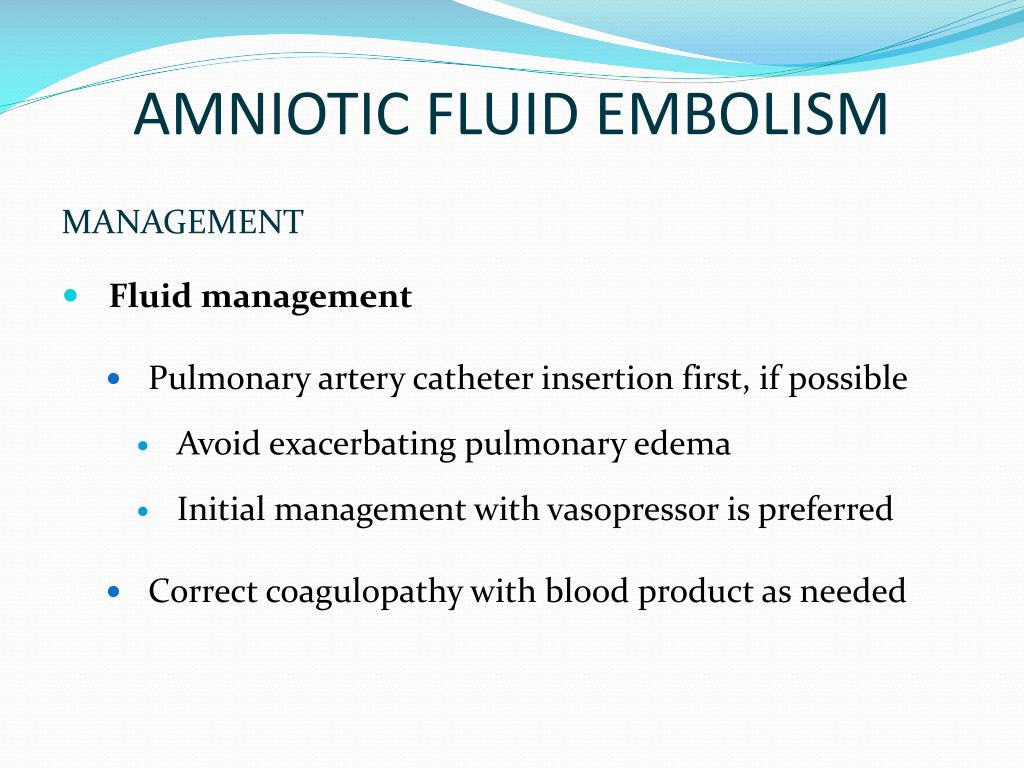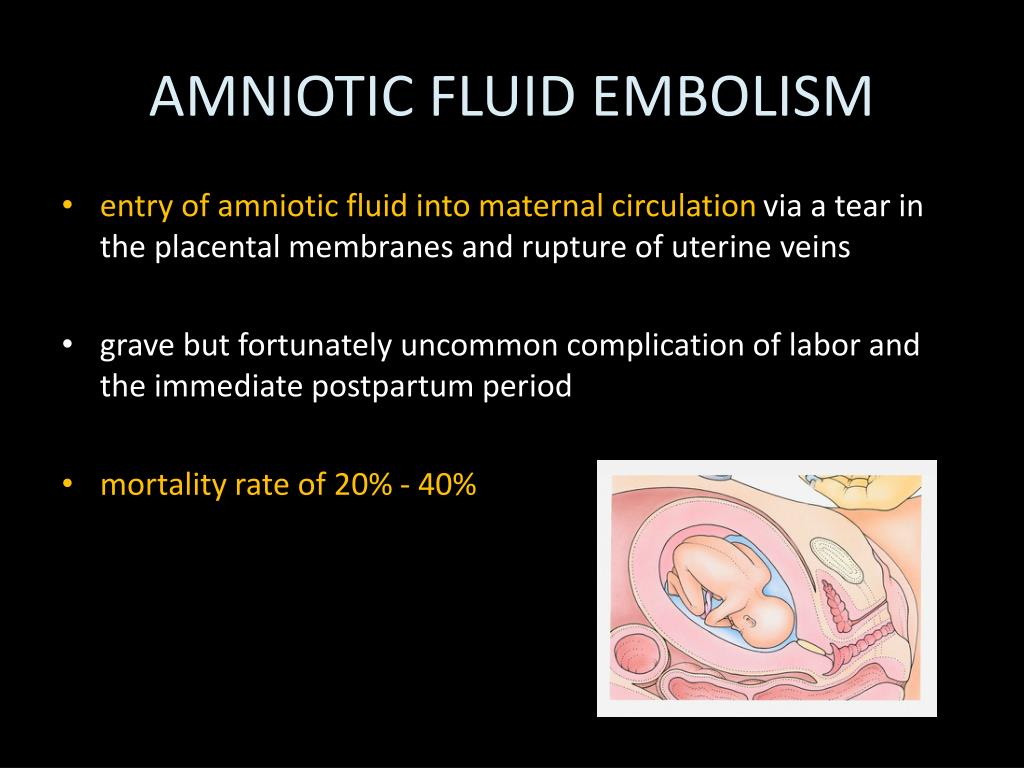

Advanced maternal age: Mothers who are 35 years and older are at a much higher risk of pregnancy and labor complications, including AFE.With the small amount of research that we already have, several factors have been associated with an increased risk of amniotic fluid embolism. The causes and specific risk factors for AFE are not well understood, partly because the condition is so rare. It's not clear why some mothers have such an extreme immune response. Many mothers during labor will absorb small amounts of amniotic fluid without any complications. While this condition is rare, amniotic fluid entering the bloodstream is not uncommon. This immune response activates abnormal clotting in the mother's lungs and blood vessels, which can lead to a serious blood-clotting condition called disseminated intravascular coagulation. When the fetal material enters the mother's bloodstream, her immune system recognizes is as a foreign substance in the body and which triggers an acute inflammatory response. This break of the placental barrier can be triggered by trauma during labor. The underlying cause for this is not fully understood, but doctors believe it can stem from a breakdown in the placental barrier.

AFE occurs when the amniotic fluid or fetal material passes the placental barrier, enters the mother's bloodstream and starts moving throughout the circulatory system. It can also happen shortly after birth while the placenta is still inside the mother's body. AFE is more common in vaginal delivery but can occur during a C-section as well.


 0 kommentar(er)
0 kommentar(er)
